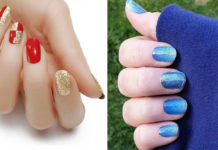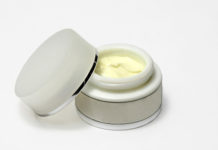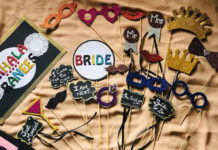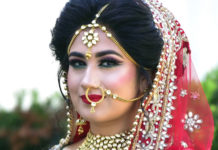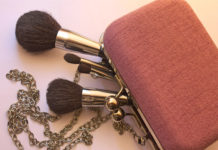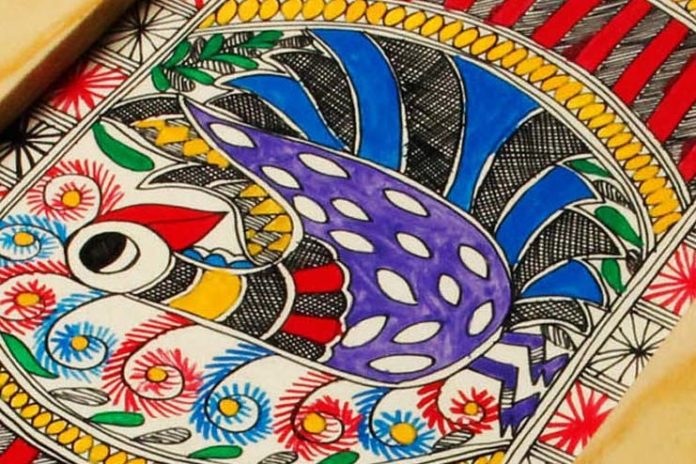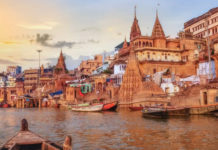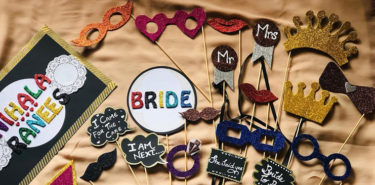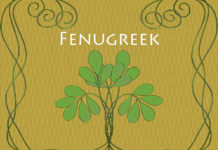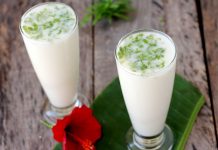Affiliate Disclaimer
Some links in this article are affiliate links. We may earn a small commission if you make a purchase through these links, at no extra cost to you. We only recommend products we find useful to our readersIt is not a new thing that every painting or art reflect a culture or tradition, from the place it has been originated. Paintings are the reflection of the times in which art was created. Madhubani paintings are also known as ‘Mithila painting.’ It is known as ‘Mithila’ because the place name was ‘Mithila’ and was also mentioned in the Ramayana. This name later changes to Madhubani with time. Mithila or Madhubani is situated in Bihar and is especially known as the birth place of Goddess Sita.
Madhubani art is done by using natural colors and pigments; and is done with fingers, twigs, nib pens, or match sticks. It is mostly done for the festival of Holi, Surya sashti, Kali puja, upanayana, or Durga puja. Madhubani art designs are mostly popularized after the massive Bihar earthquake in 1934 by William G. Archer when he went for the inspection and saw these amazing paintings on the huts and interior walls of homes. These Madhubani art have also been compared with modern Western artists like Klee, Miro, and Picasso.
These paintings have varieties of styles that is done like in the bharni, which is in the pots; Katchni or in geometrical patterns; Tantric or in God mode; Godhna or in garden form, Kohbar or more related with an animal. These Madhubani art designs and style are also used in handloom weaving.
History Of Madhubani Paintings
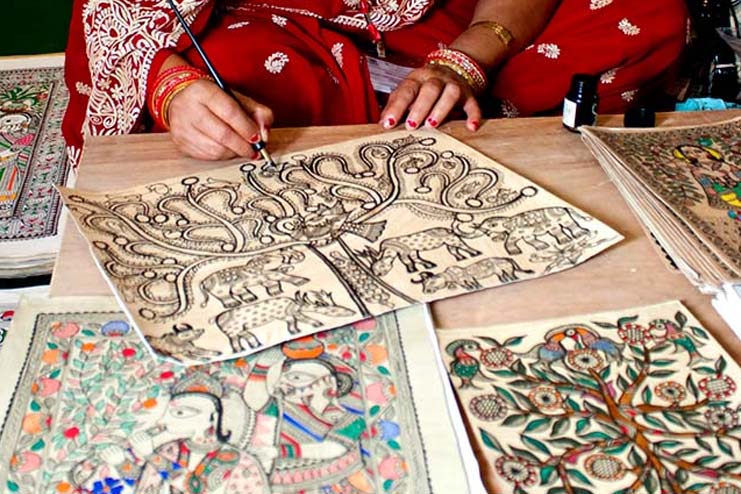
It is a 2500-year-old folk art, and the history of the Madhubani art is mostly said that date backs with the time of Ramayana. When the king Janaka asked an artist to capture the image of his daughter Sita’s wedding to Rama. These paintings are also created by the women on the walls as well as floors of the homes during the festivals, ceremonies or even special occasions. This form of art has been practiced in the areas around Bihar as well as Nepal.
Themes Of Madhubani Paintings
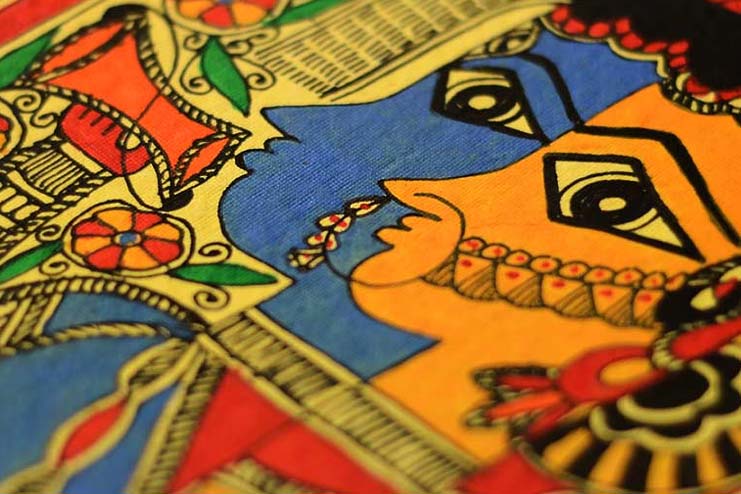
As I have said earlier, Mithila or Madhubani paintings images are mostly done by using the fingers, twigs, matchsticks or pen nibs these modern days. Usually, the bright colours are being used in the paintings with the outline made from the rice paste as the framework. There are rarely any of the blank spaces in these type of paintings. If there is a border being constructed, then it is embellished with the geometric as well as floral patterns. Natural dyes are being used for the paintings. For example, the charcoal or soot for black, turmeric extract for the yellow, red from the sandalwood or Kusama flower juice, orange from the Palasha flowers, blue from the indigo, black is made by adding soot to the cow dung, green from the leaves of wood apple tree,white from the rice powder and so on.
Madhubani painting designs are being characterized by the figures which have prominently being outlined, like bulging fish-like eyes and even pointed noses. The themes from these paintings mostly include the natural elements like the fish, elephant, parrot, turtle, moon, sun, bamboo tree and lotus. Geometric patterns symbolize love, devotion, valour, fertility, and prosperity.
How To Make Madhubani Paintings
The brush that is being used for the Madhubani paintings was mainly made of the cotton, that is wrapped around a bamboo stick. Shading is not done when the colors are applied. A double line is being drawn for the outlines, and a gap is being filled with tiny straight lines. In the linear Maithili paintings, they do not even need the application of the colors; only the outlines are being drawn. Here is a video on how to make a Madhubani painting;
Madhubani Art In Present Times
Madhubani art is still being practiced by women in the Ranti village of Bihar. In fact, there are three generations of women named Karpuri Devi, sister-in-law of a well-known artist Mahasundari Devi, Dulari, and Mahalaxmi from the village who have made efforts to keep this art form alive by educating women in their village and teaching them on how to make Madhubani painting a way of life and how to take the legacy forward. The Government of India, have commissioned the works of these three women and this artwork has found a place in the Mithila Museum of Japan.
These three women aim to empower other women through their painting as well as creating awareness on the issues like the education as well as eve-teasing. They are encouraging the students to paint on the topics which are even more closer to the hearts – that can be anything from the folk tales that they might have heard during their childhood to the status of women. It is interesting on how these paintings were done by the women to depict the religion, traditions as well as social norms are being used by them to make their voices heard.
By




